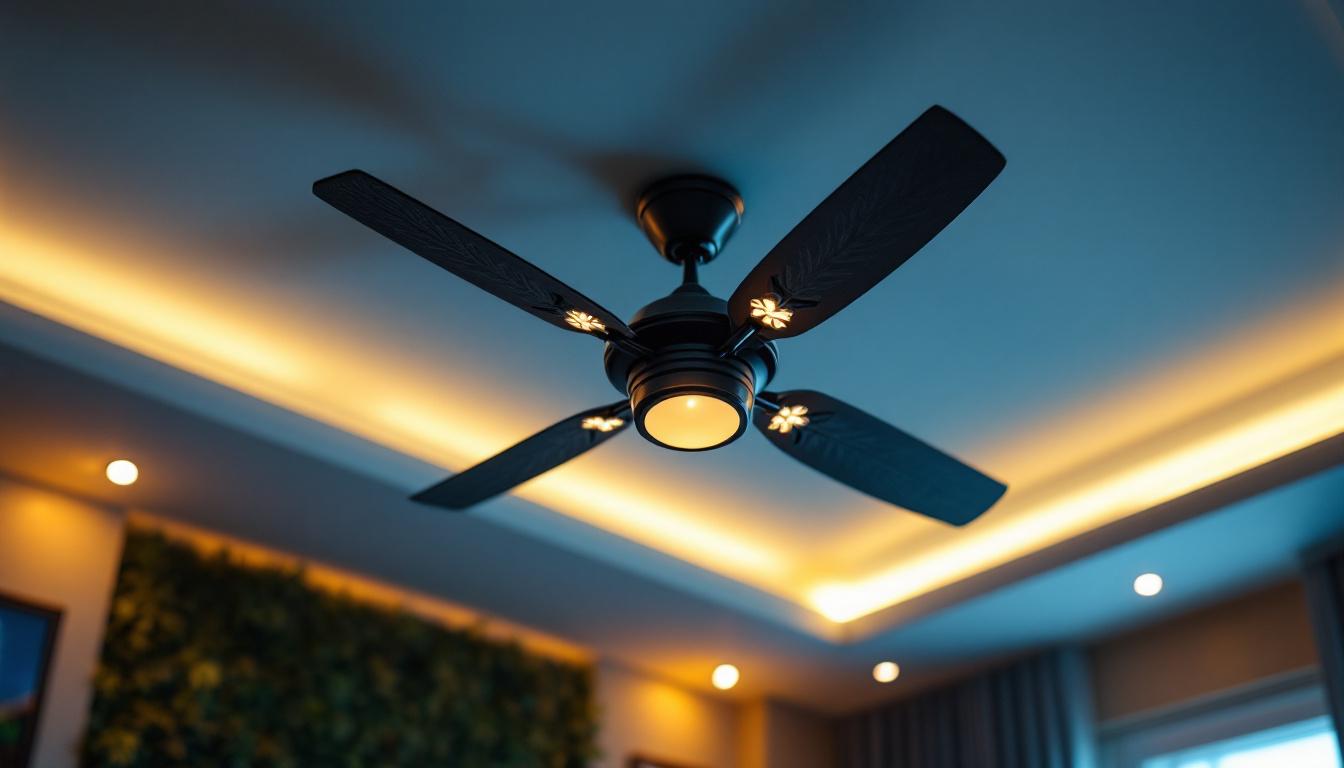
As the demand for energy-efficient lighting solutions continues to grow, T5 fixtures have emerged as a popular choice among lighting contractors. These fixtures not only provide superior illumination but also offer significant energy savings. However, ensuring a successful installation requires careful planning and execution. This checklist serves as a comprehensive guide for lighting contractors to navigate the intricacies of T5 fixture installation.
T5 fixtures are designed to accommodate T5 fluorescent lamps, which are known for their slim profile and high efficiency. They are commonly used in commercial spaces, retail environments, and even residential applications. Understanding the unique characteristics of T5 fixtures is crucial for effective installation and optimal performance.
One of the primary advantages of T5 fixtures is their energy efficiency. Compared to traditional fluorescent lamps, T5 lights consume less power while delivering comparable or even superior brightness. This efficiency translates into lower electricity bills and a reduced carbon footprint.
Additionally, T5 fixtures have a longer lifespan, which means fewer replacements and maintenance costs over time. Their compact design allows for versatile installation options, making them suitable for various applications, from office spaces to warehouses.
Another significant benefit of T5 fixtures is their superior color rendering index (CRI), which is crucial for environments where accurate color perception is important, such as art studios or retail displays. A higher CRI means that colors appear more vibrant and true to life, enhancing the overall visual experience. Furthermore, T5 fixtures can be equipped with electronic ballasts that reduce flickering and noise, contributing to a more pleasant and productive atmosphere.
T5 fixtures are versatile and can be used in a variety of settings. They are often found in commercial environments, such as offices, retail stores, and schools, where bright, even lighting is essential. In industrial settings, T5 fixtures are favored for their durability and ability to withstand harsher conditions.
Moreover, T5 fixtures are increasingly being used in residential applications, particularly in kitchens and workspaces where high-quality lighting is needed. Their slim profile allows for easy integration into existing designs without compromising aesthetics.
In addition to these common applications, T5 fixtures are also popular in horticulture, where they provide the necessary light spectrum for plant growth. Many indoor gardeners and commercial growers utilize T5 fixtures to promote healthy plant development, taking advantage of their energy efficiency and effective light output. As the trend of urban gardening and indoor farming continues to rise, T5 fixtures are becoming a go-to solution for those looking to maximize growth potential in limited spaces.
Before diving into the installation process, thorough preparation is essential. This phase involves assessing the site, gathering necessary tools, and ensuring compliance with local regulations.
A comprehensive site assessment is the first step in the installation process. This involves evaluating the existing lighting setup and determining the optimal placement for T5 fixtures. Consider factors such as ceiling height, room dimensions, and the intended use of the space.
Additionally, take note of any obstacles that may interfere with installation, such as ductwork or plumbing. Understanding the layout will help in planning the installation and ensuring that the fixtures provide adequate illumination. It may also be beneficial to consider the natural light sources in the room; windows and skylights can significantly affect the overall lighting scheme. By factoring in these elements, you can create a balanced lighting environment that enhances both functionality and aesthetics.
Having the right tools and materials on hand is crucial for a smooth installation process. Essential tools may include a drill, wire strippers, a level, and safety gear. Ensure that the T5 fixtures are compatible with the existing electrical system and that all necessary components, such as ballasts and connectors, are available.
It is also advisable to have a checklist of all materials needed to avoid delays during installation. This proactive approach can save time and reduce the risk of errors. Moreover, consider the importance of safety during the installation process; using appropriate personal protective equipment (PPE) such as gloves and goggles can prevent injuries. Additionally, reviewing the manufacturer’s installation instructions and safety guidelines can provide valuable insights and ensure that the installation adheres to best practices. Taking these precautions not only enhances safety but also contributes to the longevity and performance of the lighting fixtures once installed.
The installation of T5 fixtures involves several key steps, each requiring attention to detail to ensure safety and functionality. Following a systematic approach will help in achieving a successful outcome.
Before starting the installation, it is vital to turn off the power supply to the area where the fixtures will be installed. This ensures safety for the contractor and prevents electrical hazards. Verify that the circuit can handle the additional load from the new fixtures.
Next, connect the fixtures to the electrical supply according to the manufacturer’s instructions. This may involve wiring the fixtures to a ballast or directly to the power source. Proper connections are crucial for the performance and longevity of the fixtures. It is also advisable to use wire connectors that are rated for the specific gauge of wire being used, as this can prevent overheating and ensure a secure connection.
Once the electrical connections are secure, the next step is to mount the T5 fixtures. Depending on the design, fixtures may be surface-mounted or suspended from the ceiling. Use a level to ensure that the fixtures are aligned correctly, as improper installation can lead to uneven lighting.
Secure the fixtures using appropriate fasteners, and double-check that they are firmly in place. If using a suspended installation, ensure that the suspension system is adequately rated to support the weight of the fixtures. Additionally, consider the spacing between fixtures; proper spacing can enhance the overall lighting effect and minimize shadows, creating a well-lit environment. For larger areas, it may be beneficial to create a lighting plan that outlines the placement and number of fixtures needed to achieve optimal illumination.
After the installation is complete, conducting a series of checks is essential to ensure everything is functioning correctly. This phase involves testing the fixtures and making any necessary adjustments. Skipping this step can lead to issues down the line, such as inadequate lighting or electrical problems, which can be both frustrating and costly to rectify.
Once the fixtures are mounted and connected, restore power to the circuit and test each fixture individually. Check for proper operation, ensuring that each light turns on and off without flickering. If any issues arise, troubleshoot the connections or consult the manufacturer’s guidelines. It’s also wise to check for any unusual sounds, such as buzzing or humming, which could indicate an underlying electrical issue that needs to be addressed promptly.
Additionally, assess the overall illumination in the space. Ensure that the fixtures provide adequate lighting levels for the intended use. This may involve adjusting the angle or position of the fixtures to achieve the desired effect. Consider the color temperature of the bulbs as well; warmer tones can create a cozy atmosphere, while cooler tones can enhance focus and productivity, making it essential to match lighting with the room’s purpose.
After testing, make any necessary adjustments to the fixtures. This could involve repositioning them for optimal lighting or adjusting dimmer settings if applicable. It’s important to ensure that the lighting meets the requirements of the space and enhances the overall ambiance. For instance, in a living room, you might want to create a softer, more inviting glow, while in a workspace, brighter, more focused lighting may be necessary to facilitate productivity.
Finally, clean up the installation area, removing any debris or packaging materials. A tidy workspace not only looks professional but also ensures safety for anyone who will be using the space. Additionally, take a moment to review the installation with any stakeholders or family members, gathering feedback on the lighting setup. This collaborative approach can lead to further refinements and ensure that everyone is satisfied with the final outcome, creating a space that is both functional and aesthetically pleasing.
Proper maintenance of T5 fixtures is crucial for ensuring long-term performance and reliability. Regular checks can help identify potential issues before they become significant problems.
Routine maintenance should include cleaning the fixtures and checking for any signs of wear or damage. Dust and dirt can accumulate on the fixtures, diminishing their brightness and efficiency. Regular cleaning will help maintain optimal performance.
Additionally, inspect the electrical connections periodically. Loose or corroded connections can lead to flickering lights or complete fixture failure. Addressing these issues promptly can extend the lifespan of the fixtures and reduce the need for costly repairs.
Even with proper installation and maintenance, issues may arise with T5 fixtures. Common problems include flickering lights, inconsistent brightness, or complete failure to turn on. Identifying the root cause of these issues is essential for effective troubleshooting.
Flickering lights may indicate a loose connection or a failing ballast. Inconsistent brightness could be a sign of a faulty lamp or ballast. If a fixture fails to turn on, check the power supply and connections first before considering lamp replacement. Keeping a troubleshooting guide handy can assist in quickly resolving these issues.
T5 fixtures offer an excellent lighting solution for various applications, combining energy efficiency with effective illumination. However, successful installation and maintenance require careful planning and attention to detail. By following this checklist, lighting contractors can ensure that they provide high-quality installations that meet their clients’ needs.
From understanding the advantages of T5 fixtures to conducting thorough post-installation checks, each step is critical in delivering a successful lighting solution. With proper maintenance and troubleshooting, T5 fixtures can continue to provide reliable service for years to come, enhancing both functionality and aesthetics in any space.
Ready to elevate your lighting installations with the efficiency and brilliance of T5 fixtures? Look no further than LumenWholesale for all your lighting needs. Our commitment to quality and affordability ensures that you have access to the best spec-grade lighting products at wholesale prices. Say goodbye to middleman markups and hello to a vast selection of reliable lighting solutions that meet the highest industry standards. Plus, with free shipping on bulk orders, you can stock up on premium lighting without worrying about extra costs. Don’t compromise on quality or value—choose LumenWholesale for a seamless purchasing experience. Wholesale Lighting at the Best Value is just a click away.

Discover the must-know essentials for lighting contractors exploring the world of outdoor garden solar lights.

Discover why compact fluorescent light ballasts are essential for lighting contractors.

Discover the crucial role lighting plays in staircase design and why it’s essential for lighting contractors to master this aspect.

Explore the intricate science of ceiling fans with fancy lights and discover how they can transform spaces.